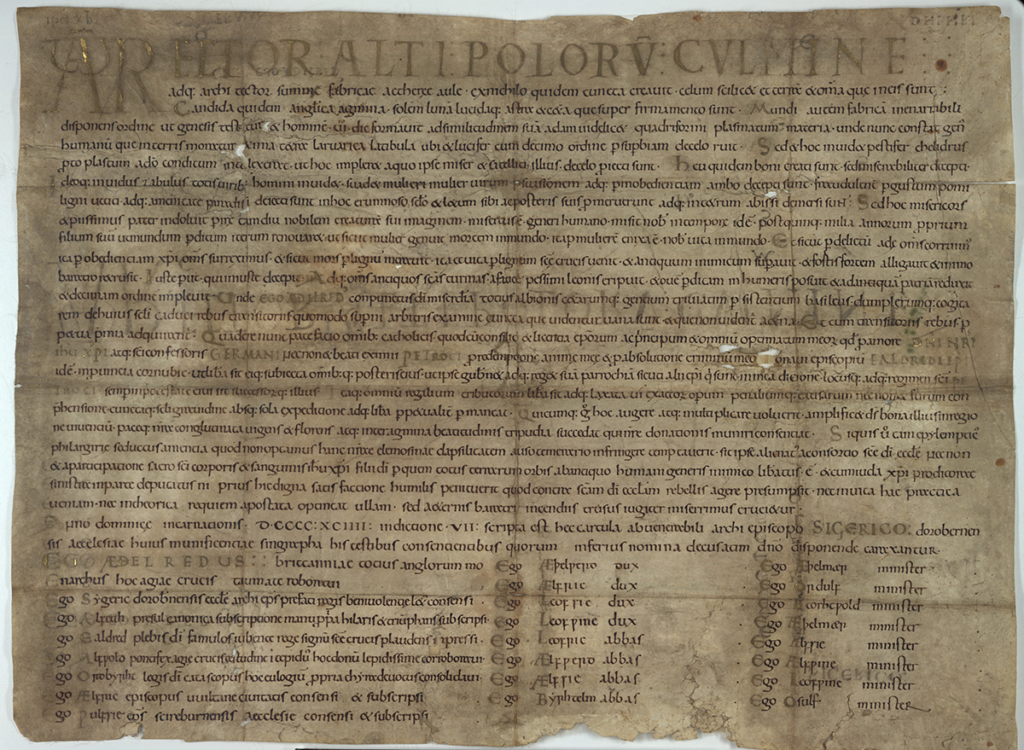
By Exeter Cathedral Archivist, Ellie Jones
Exeter’s Golden Charter gets its name because the first line is embellished with gold. It is the only known illuminated Saxon diploma in existence.
Most Saxon royal diplomas record grants of land, but this one records Æthelred II’s grant of full episcopal jurisdiction over the diocese of Cornwall to Eadred, Bishop of Cornwall, in 994. For much of the 10th century the diocese had been under the supervision of the Bishop of Crediton, resulting in several disputes over estates in Cornwall. The Golden Charter is essentially a foundation charter asserting independence for the Cornish diocese, and it may have served as the model for Exeter’s own Foundation Charter. Independence for the Cornish diocese lasted until 1050, when Edward the Confessor created the Diocese of Exeter, covering both Devon and Cornwall. This remained the case until 1876, when the Diocese of Truro was created.
Æthelred II was the longest serving Saxon king of the English. His rule lasted for 37 years, beginning in 978 at the age of about 12, and ending with his death at the age of 50 in 1016. Ruling at a time of increasing threat of Viking invasion, Æthelred II had a reputation as a poor decision maker which eventually led to the conquest of England. This poor reputation was enhanced by the Anglo Saxon chronicles and other later sources biased towards the Viking rulers Sweyn Forkbeard, Harald and Cnut who succeeded him. By the 12th century he had gained the nickname Æthelred the “Unready” (meaning poorly advised). In recent years, a closer look at surviving contemporary sources including this charter has resulted in a more balanced reassessment of his reign.
Both the Golden Charter and Cathedral Foundation Charter will be on display in the Cathedral, alongside other Anglo Saxon treasures including the Exeter Book, from 10am-1pm on Thursday 18 August.